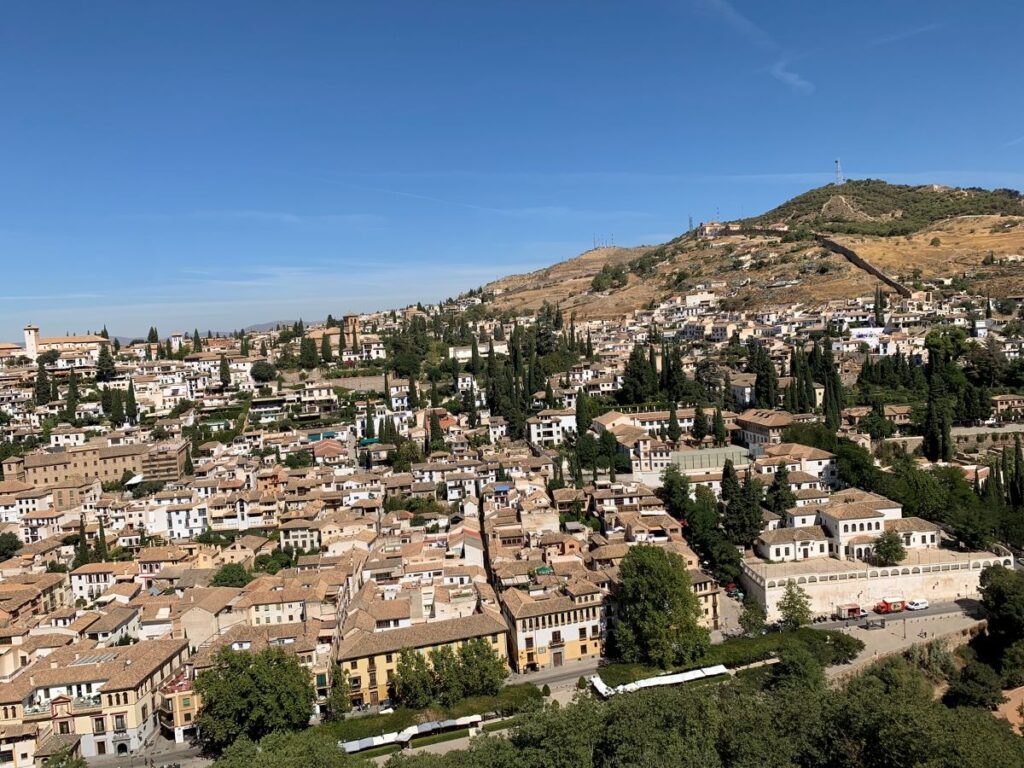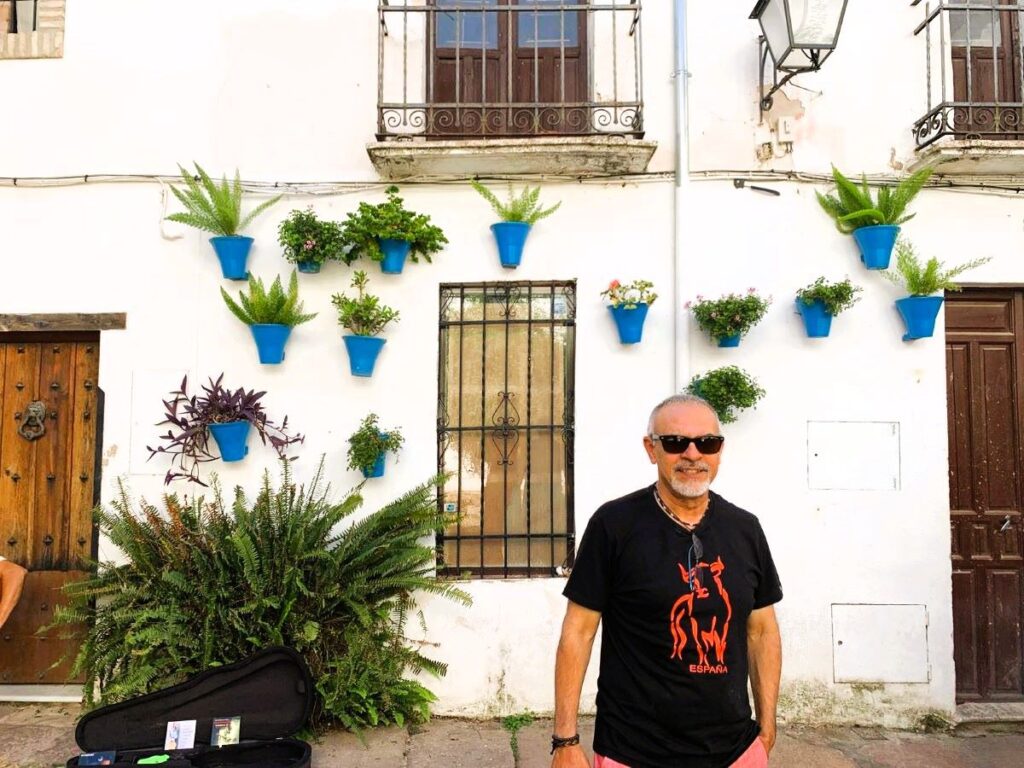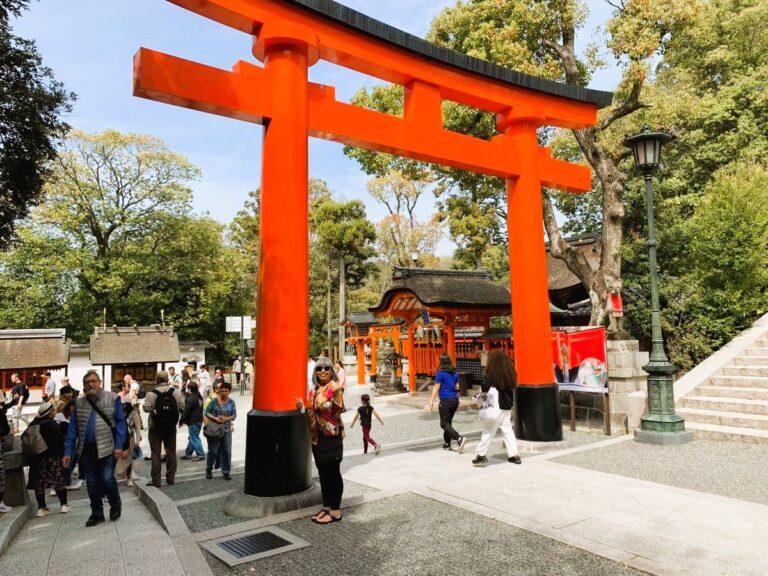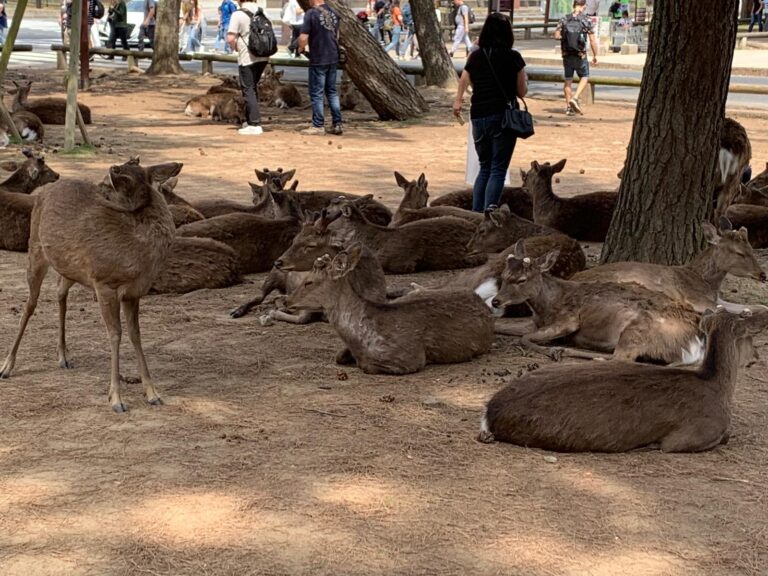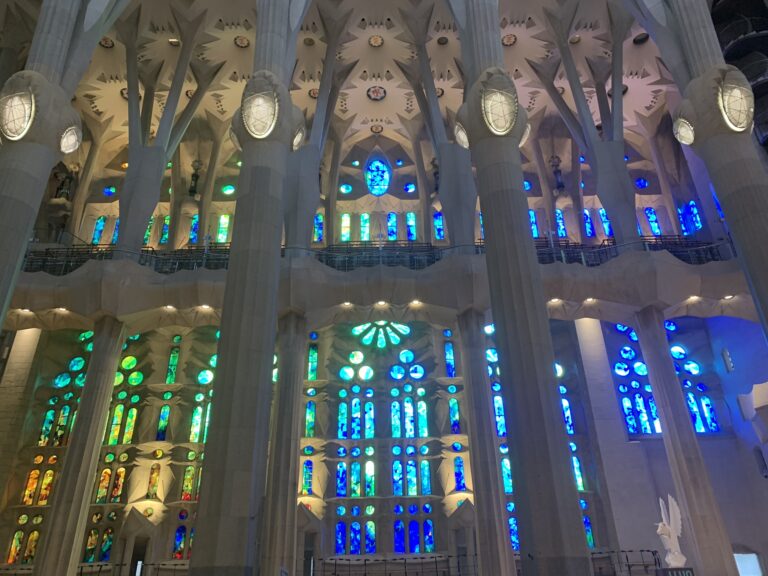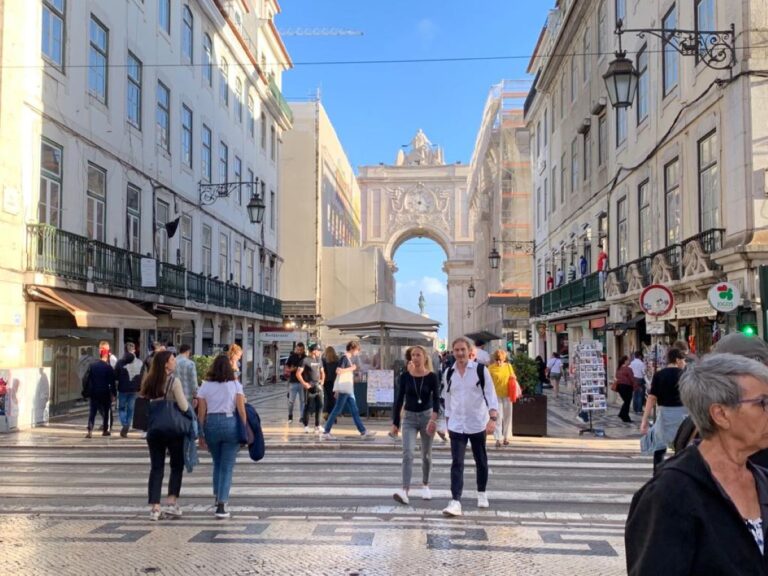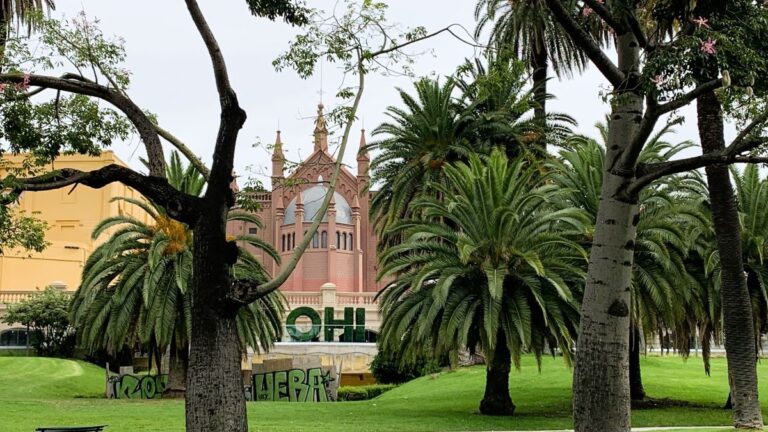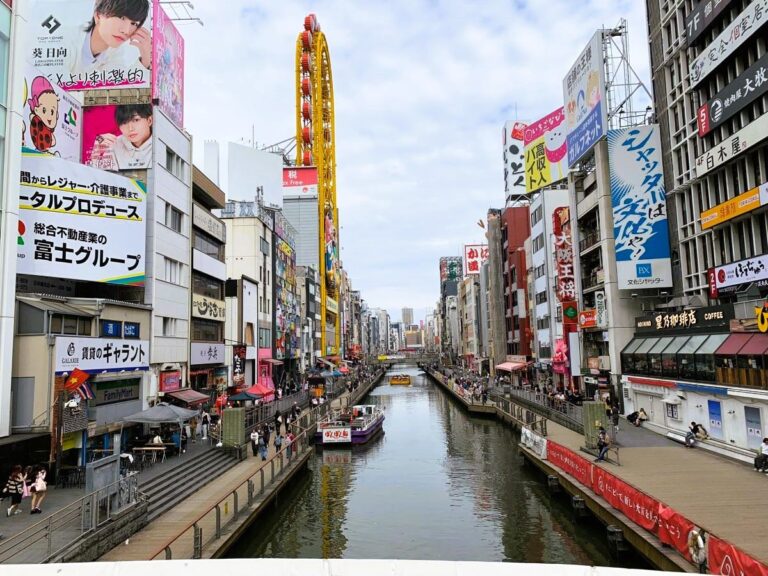Exploring the Stunning córdoba Mosque: History, Architecture, and Legacy
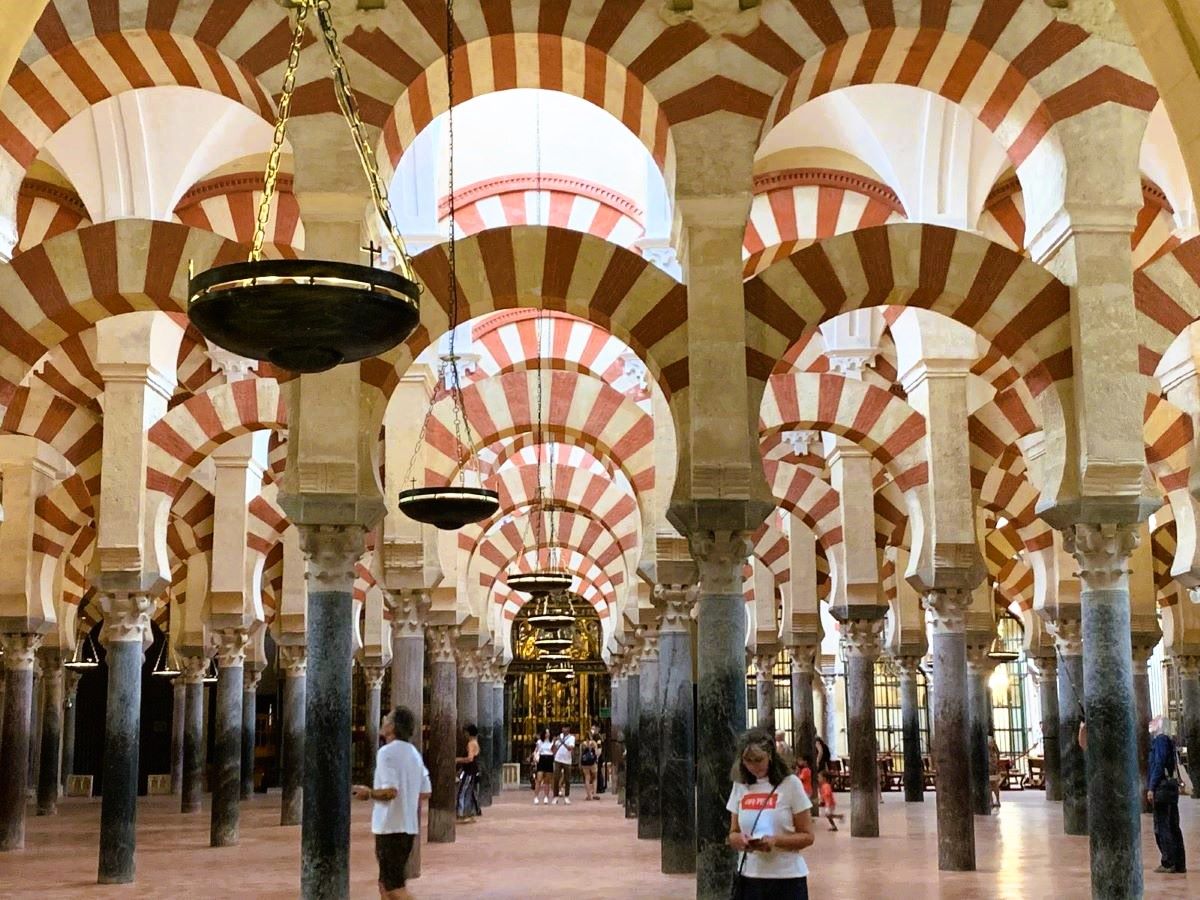
The córdoba mosque, or Mezquita-Catedral is a testament to centuries of history and cultural exchange. This architectural marvel reflects the height of Islamic art and innovation in medieval Spain.
Recognized as a UNESCO World Heritage Site, it blends Islamic and Christian elements, marking its transformation into a cathedral after the Reconquista.
Its intricate horseshoe arches, detailed tilework, and iconic mihrab reflect Cordoba’s golden age and its evolving cultural identity.
It’s one of Europe’s most unique landmarks.
The Historical Significance of the Great Mosque of córdoba
The Córdoba Mosque is a symbol of cultural shifts and centuries of history.
From its construction under Islamic rule to its transformation as a Christian cathedral, the mosque tells the story of the city’s evolving identity.
Let’s explore how this fascinating structure came to be and the transformations it has undergone.
Construction and Early History
The origins of the córdoba mosque date back to 785 CE, when Abd ar-Rahman I initiated its construction. Fleeing the Abbasids, he settled in Al-Andalus (modern-day Spain) and established Cordoba as a hub of Islamic culture and governance.
The decision to build a monumental mosque here wasn’t just about religion—it was an assertion of authority, a statement of artistic and cultural aspiration.
The mosque was constructed on the site of a former Visigothic church, emphasizing the intersection of cultures and religions in this region.
At the time, it showcased advanced architectural innovations, like the iconic horseshoe arches and intricately carved columns. The interior was a reflection of Islamic art at its finest, blending practicality with hypnotic beauty that left a lasting impression on Islamic and Western architecture alike.
For more on the mosque’s architectural impact, this guide provides fascinating insights.
Transformation Over the Centuries
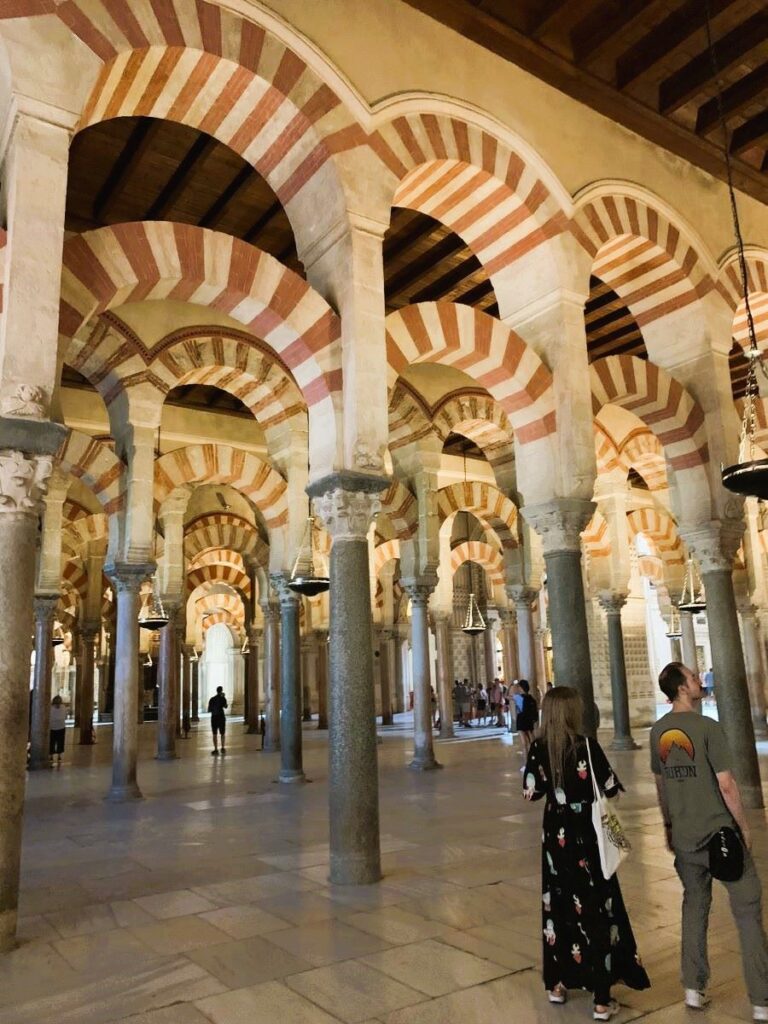
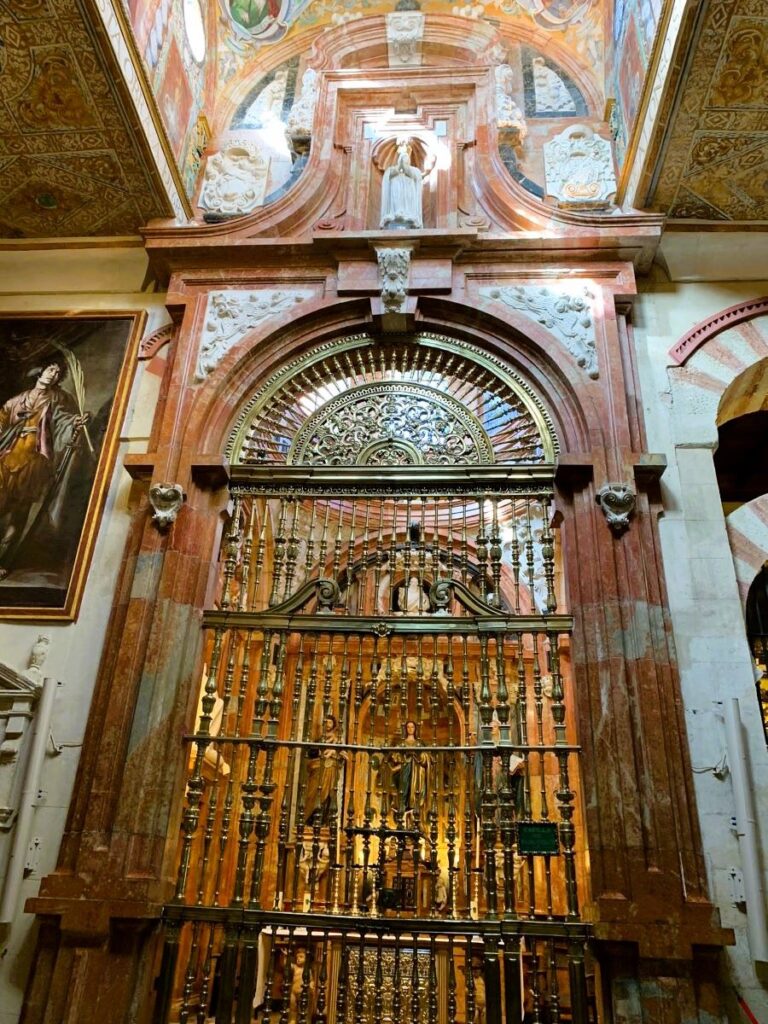
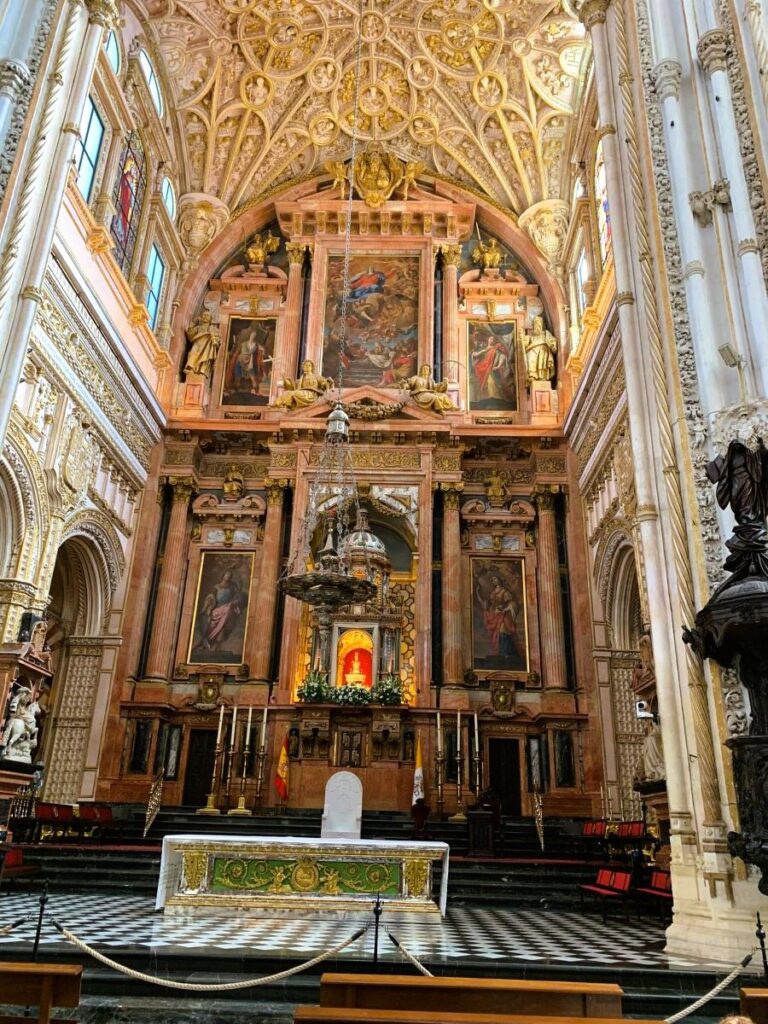
The córdoba Mosque has witnessed numerous transformations over the centuries, both literally and symbolically.
Its most dramatic change occurred in the early 13th century, following the Reconquista. In 1236, King Ferdinand III of Castile seized Cordoba and converted the mosque into a Christian cathedral. This marked a turning point, as the structure was no longer just an Islamic masterpiece; it became a blend of two faiths.
Further modifications included the addition of a Renaissance-style nave in the 16th century. Despite this, much of the original Islamic architecture remained intact, preserving the mosque’s intricate mihrab and elaborate geometric patterns.
Today, it stands as a unique blend of Islamic artistry and Christian influences, symbolizing both conflict and coexistence over time.
For a detailed history of the mosque’s transformation, take a look at this detailed timeline.
The mosque-cum-cathedral remains a dynamic reminder of Cordoba’s history—a city where cultures collided, merged, and left a legacy that still captivates every visitor.
Architectural Features of the Cordoba Mosque
The Cordoba Mosque is more than stone and mortar. Its intricate design reflects centuries of artistic innovation and cultural exchange. Here’s a closer look at some of its most captivating features.
Horseshoe Arches

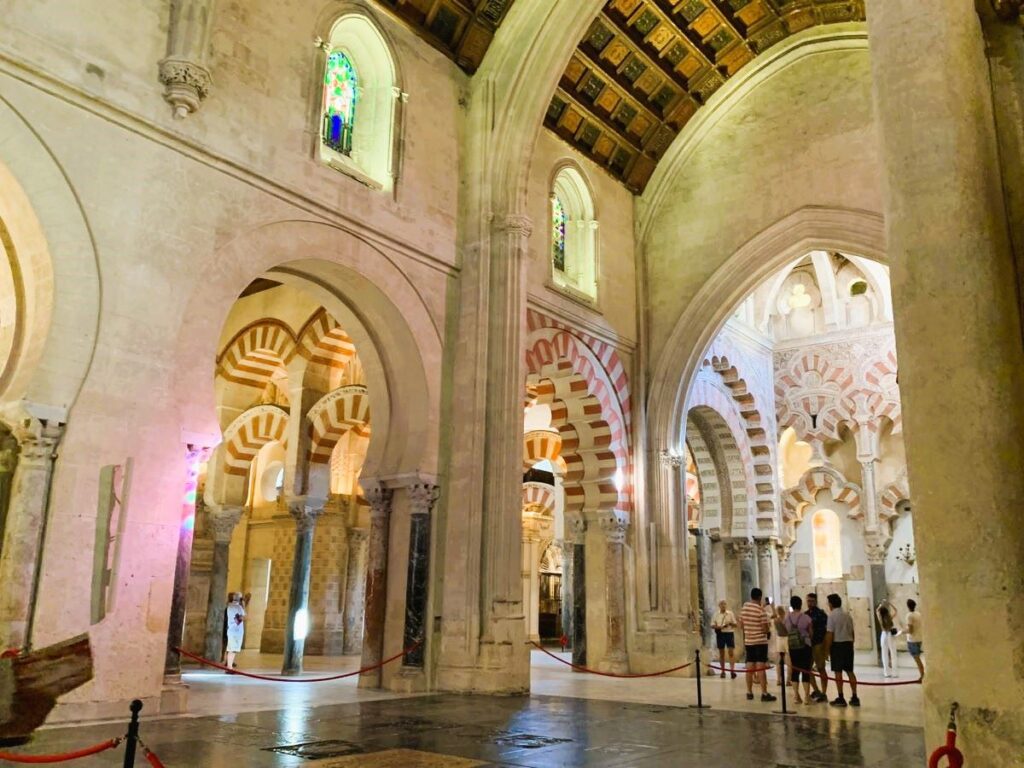
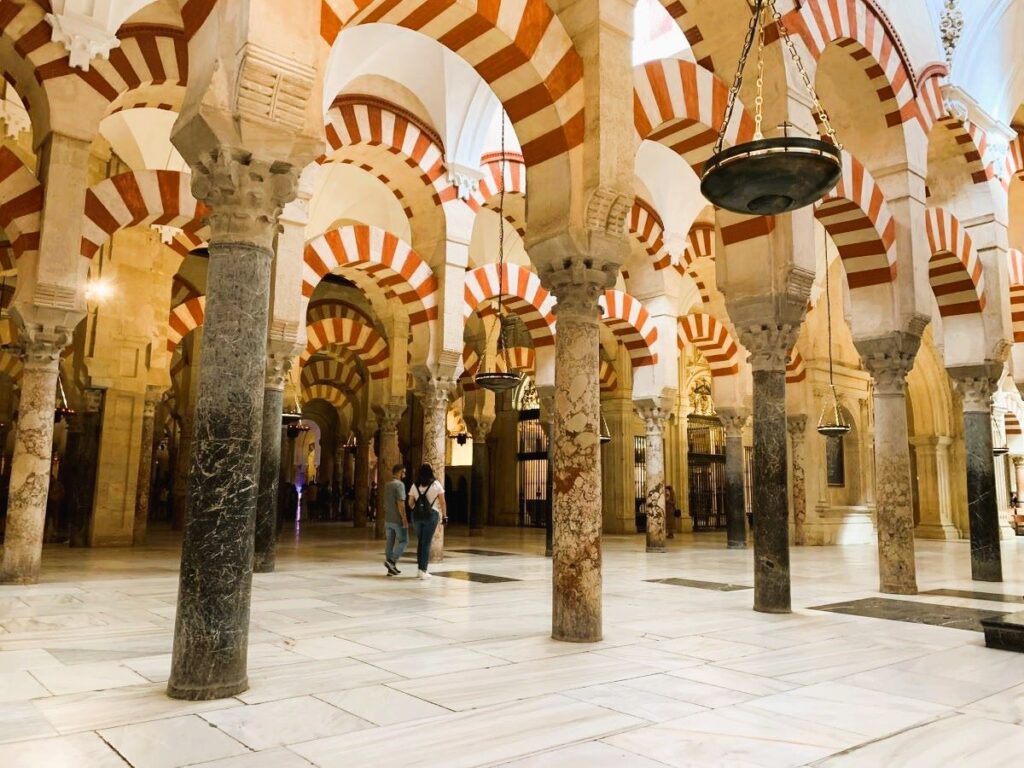
One of the most iconic elements of the córdoba Mosque is its horseshoe arches. These arches, known for their exaggerated curves, are a hallmark of Islamic architecture. They serve both a practical and symbolic purpose—architecturally supporting the structure while visually drawing the eye upward, suggesting a sense of infinity.
In the Cordoba Mosque, these arches are uniquely double-tiered, allowing for higher ceilings and creating a mesmerizing rhythm of repetition and symmetry throughout the prayer hall.
Beyond their engineering brilliance, the horseshoe arches illustrate how architectural styles can evolve. The design has roots in Visigothic architecture, but it was perfected under Islamic rule. For more details on these arches, this detailed overview provides additional context.
The Mihrab
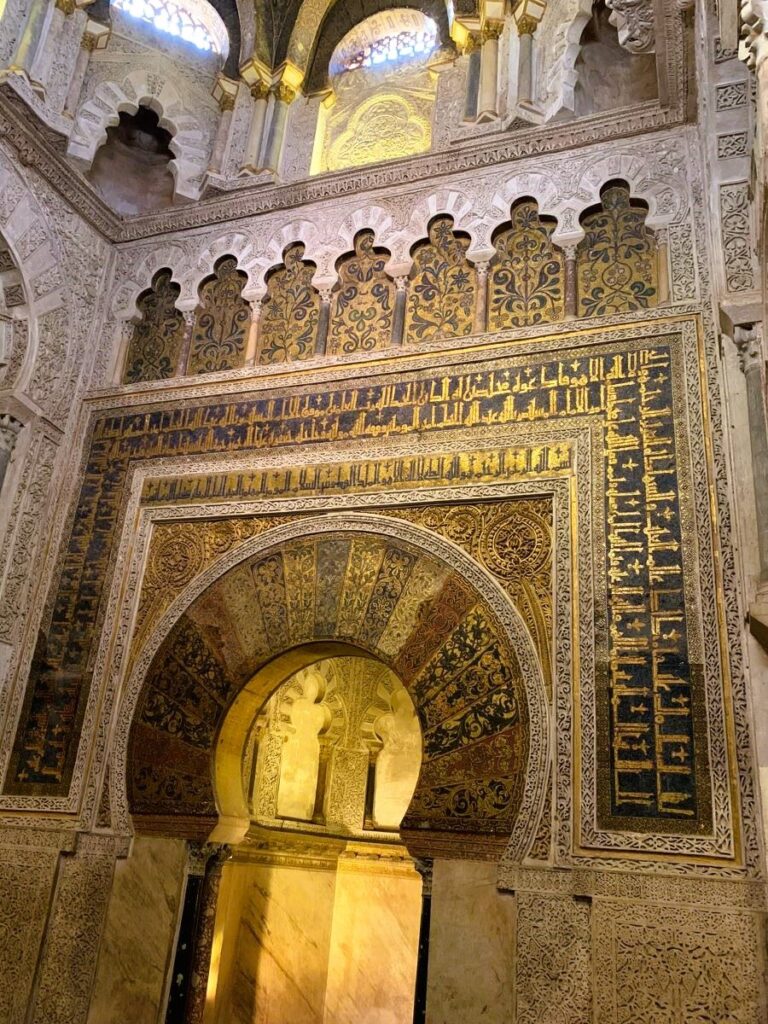
The mihrab of the Cordoba Mosque is a masterpiece of artistic brilliance. This semi-circular niche, located in the qibla wall, indicates the direction of Mecca for worshippers. But here, it doesn’t stop at function. The Cordoba mihrab is elaborately adorned with gold, tesserae, and Arabic calligraphy, creating a glowing centerpiece that commands attention. The mosaics were crafted by Byzantine artisans, which speaks volumes about the cultural exchanges of the time.
Every detail in the mihrab design feels intentional. The Quranic verses etched into its surface invite contemplation, while the dazzling colors create a sense of divine majesty. If you’ve ever wondered how art can transcend its medium, the mihrab demonstrates this perfectly. You can explore how these elements come together through this comprehensive resource.
Intricate Mosaics and Decor
Every corner of the córdoba Mosque tells a story, and nowhere is this clearer than in its mosaics and decorative elements. The vibrant mosaics, often made of glass and stone, feature geometric patterns and floral motifs that feel almost hypnotic. These intricate designs were not just for beauty—they spoke to the Islamic emphasis on order and unity, reflecting the cosmos in their interconnected patterns.
In addition, the ceilings and walls are adorned with carved plasterwork, intricate wood carvings, and gilded script, showcasing the pinnacle of craftsmanship. The use of materials like marble and alabaster adds a luxurious touch, while the colors—reds, blues, and golds—enhance the mosque’s ethereal atmosphere. These details serve as a reminder of the wealth and power of Cordoba during its golden age. For more insight into the decoration techniques, this article highlights their historical significance.
Every feature of the Cordoba Mosque tells a story, but what stands out most is how these architectural elements work together seamlessly. They create a space that is not only functional but also emotionally and spiritually moving. It’s a clear example of how architecture can transcend time and continue to inspire awe centuries later.
Cultural and Religious Influences
The córdoba Mosque is a vivid testament to the mingling of Islamic and Christian traditions. This duality is etched into its walls, arches, and every stone, embodying the complex history of religious and cultural shifts in Cordoba.
Let’s unravel the ways in which these influences shaped its identity and legacy.
Islamic and Christian Influences
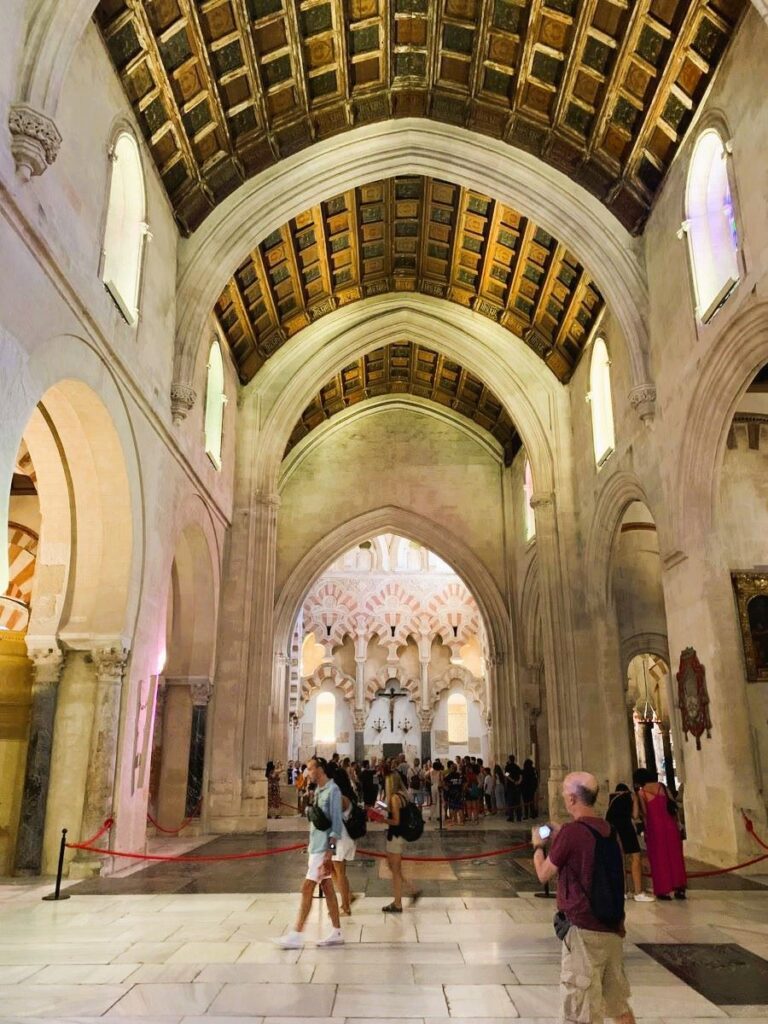
The córdoba Mosque represents one of the finest examples of the blending of architectural styles, born out of its unique function as both mosque and cathedral over the centuries.
Originally constructed under Islamic rule in 785 CE, the mosque showcases hallmarks of Islamic architecture, including its famous horseshoe arches, mesmerizing geometric decor, and the dazzling mihrab, all symbolizing the unity and divinity central to Islamic art.
However, following the Reconquista in 1236, this sacred space transitioned into a Christian cathedral.
While many Islamic elements remained, additions like the Renaissance-style nave and the intricately carved choir stalls brought layers of Christian artistry. The result is a striking cultural conversation—two religions sharing the same space yet maintaining their distinct identities.
Walking through the mosque today feels like stepping into a dialogue between civilizations. You’ll notice how the original Moorish craftsmanship and the later Christian embellishments don’t clash but coexist, creating a unified yet multilayered aesthetic.
For more insights into how these styles evolved, this article highlights their fascinating journey.
The Role in Cordoba’s Identity
Cordoba’s cultural soul pulses through the mosque’s walls. During its Islamic golden age, the Cordoba Mosque stood as an unparalleled symbol of the city’s economic, spiritual, and intellectual significance. It wasn’t just a place of worship—it was a hub for scholars, philosophers, and artisans, making Cordoba the beacon of Al-Andalus.
Today, the mosque-cathedral continues to be a cornerstone of Cordoba’s identity. Its dual character reflects the city’s layered history, where Moorish influences weave through Spanish life like threads in a tapestry. Locals take immense pride in preserving this monument as a testament to coexistence, even amid historical conflicts.
Curious how religious symbols define cultural memory? Check out this in-depth exploration of religious duality in Cordoba. It’s intriguing to see how the mosque balances itself as a tourist destination and a reminder of the city’s multicultural roots.
The Cordoba Mosque is not merely a relic; it’s a living narrative of how cultures can collide, intertwine, and leave behind something greater than the sum of their parts. Its presence in Cordoba is not just historical—it’s deeply personal, reminding every visitor and local of the city’s remarkable journey through time.
Visiting the Cordoba Mosque Today
Visiting the Cordoba Mosque, or Mezquita-Catedral, is a truly unforgettable experience.
As one of Spain’s most iconic landmarks, it offers a glimpse into centuries of history, art, and culture—an opportunity not to be missed when in Cordoba.
Planning your visit is essential to make the most of this architectural marvel, and here’s everything you need to know.
Getting Tickets and Visitor Information
Securing tickets in advance is the easiest way to streamline your visit to the Cordoba Mosque. Tickets can be purchased via the official website of the Mezquita-Catedral.
General admission starts at €13, with reduced rates available for seniors, students, and children. You can find detailed pricing and ticket options on the official site.
For those who prefer guided tours, several options are available online, including packages that combine priority entry and an in-depth exploration of the mosque’s rich history.
Websites like Spain Traveller also provide a guide on purchasing tickets and ensuring an organized experience. Lastly, if you’re interested in convenient ticket packages, consider platforms such as GetYourGuide, which offer additional flexibility for selecting guided adventures.
Visitors should note that the mosque enforces strict visiting hours, which can vary throughout the year. Checking the current schedule ahead of time will ensure you don’t miss an opportunity to take in its stunning features.
Best Times to Visit
To avoid large crowds and fully appreciate the intricate details, aim to visit during off-peak hours. Early mornings tend to be the quietest, especially right after the mosque opens. Weekdays are generally less busy compared to weekends and holidays.
If you’re aiming for the most serene experience, consider the early morning free-entry period, which is occasionally offered to visitors on a limited basis. This provides a unique opportunity to explore the mosque while basking in the tranquil atmosphere, although it’s wise to verify this option in advance through the official website.
For those who enjoy photography, late afternoon visits also provide softer lighting inside the mosque, enhancing its stunning designs.
Keep in mind that special events or religious observances may affect visitor hours or increase foot traffic, so planning ahead is key to a smooth visit.
Lesser-Known Facts About the Cordoba Mosque
The Cordoba Mosque, or Mezquita-Catedral, is one of Spain’s most iconic landmarks. While its grandeur and historical significance are widely celebrated, there are fascinating stories and cultural aspects that often go unnoticed. In this section, I’ll uncover some lesser-known facets that make this architectural marvel even more intriguing.
Stories and Legends
Every ancient monument has its stories, and the Cordoba Mosque is no exception. Over the centuries, myths, legends, and fascinating anecdotes have become intertwined with its history, adding layers to its already rich narrative.
- The Forgotten Construction Detail: Did you know that one of the mosque’s columns is rumored to have a mysterious origin? There’s a story that craftsmen included it as a symbol of Cordoba’s connection to the ancient Roman Empire. Locals often argue about which column it is, adding to the air of mystery surrounding the mosque. This fascinating tidbit often goes unmentioned during standard tours. Learn about more structural quirks here.
- The Mihrab’s Hidden Message: The mosque’s iconic mihrab is a masterpiece of Islamic artistry. However, behind its mosaic brilliance is a subtle hint of Cordoba’s political ambitions during the Islamic Golden Age. It’s said that the wealth spent on its creation conveyed Abd ar-Rahman III’s desire to turn Cordoba into a cultural capital—something rival caliphs could not ignore. More details on its uniqueness can be found in this in-depth exploration.
- The Sulphur Connection: One curious legend suggests that certain parts of the mosque’s floor were originally constructed using sulphur-rich compounds. While there is no definitive proof, some locals claim this was intentional to deter insects and keep the space pristine. You can dive into the peculiar details of this theory here.
These legends may not be featured in every guidebook, but they enrich the Cordoba Mosque’s aura, giving visitors something extra to ponder while soaking in its beauty.
Cultural Events and Festivals
Beyond its historical and architectural significance, the córdoba Mosque remains a vibrant part of the city’s present-day culture. It serves as a backdrop for several cultural and religious events, drawing locals and tourists alike.
- The Cordoba Patios Festival (Festival de los Patios): This celebrated local event is held every May, turning the city into a colorful paradise. Though not directly linked to the mosque, the festival’s routes often include the surrounding historic area. The mosque’s presence enhances the ambiance as visitors tour Cordoba’s iconic patios.
- Corpus Christi Celebrations: As both a heritage site and a functioning cathedral, the mosque plays a role in this important Catholic festival. During Corpus Christi, processions pass through the historic area, including a ceremonial route near or within the mosque. While the event is predominantly religious, it offers a fascinating glimpse into how Cordoba balances its diverse identities.
- Night Tours and Light Shows: Special night tours often include dynamic lighting that emphasizes the mosque’s architectural intricacies. These events, popular among tourists, create an almost magical atmosphere—perfect for those seeking a unique perspective on this historic site.
The córdoba Mosque is more than just an artifact of the past; it’s a place where old stories meet new cultural expressions, creating a legacy that continues to evolve.
For visitors, understanding both the legends and modern cultural significance of the mosque can make a trip to Cordoba even more unforgettable.
Conclusion
The córdoba Mosque represents an extraordinary fusion of art, faith, and history. It is both a reflection of Cordoba’s golden age and a symbol of cultural transformation over time. Its enduring presence reminds us how architectural spaces can mirror human narratives of conflict, coexistence, and innovation.
As you explore its breathtaking arches and intricate mihrab, take a moment to reflect on the significance this structure holds not only for Spain but for world heritage.
If you’re planning your visit, check out resources like the official website for ticket details and visitor information.
What resonates most is the mosque’s ability to speak across centuries, showing how cultural legacies evolve yet remain timeless. It’s a testament to the power of shared history—a must-see for anyone visiting Cordoba.
Are you planning a trip in the near future? Or have you been here before? I would love to hear from you. Drop me a line in the comments section below. Thanks for coming by and reading the post. Best wishes!


